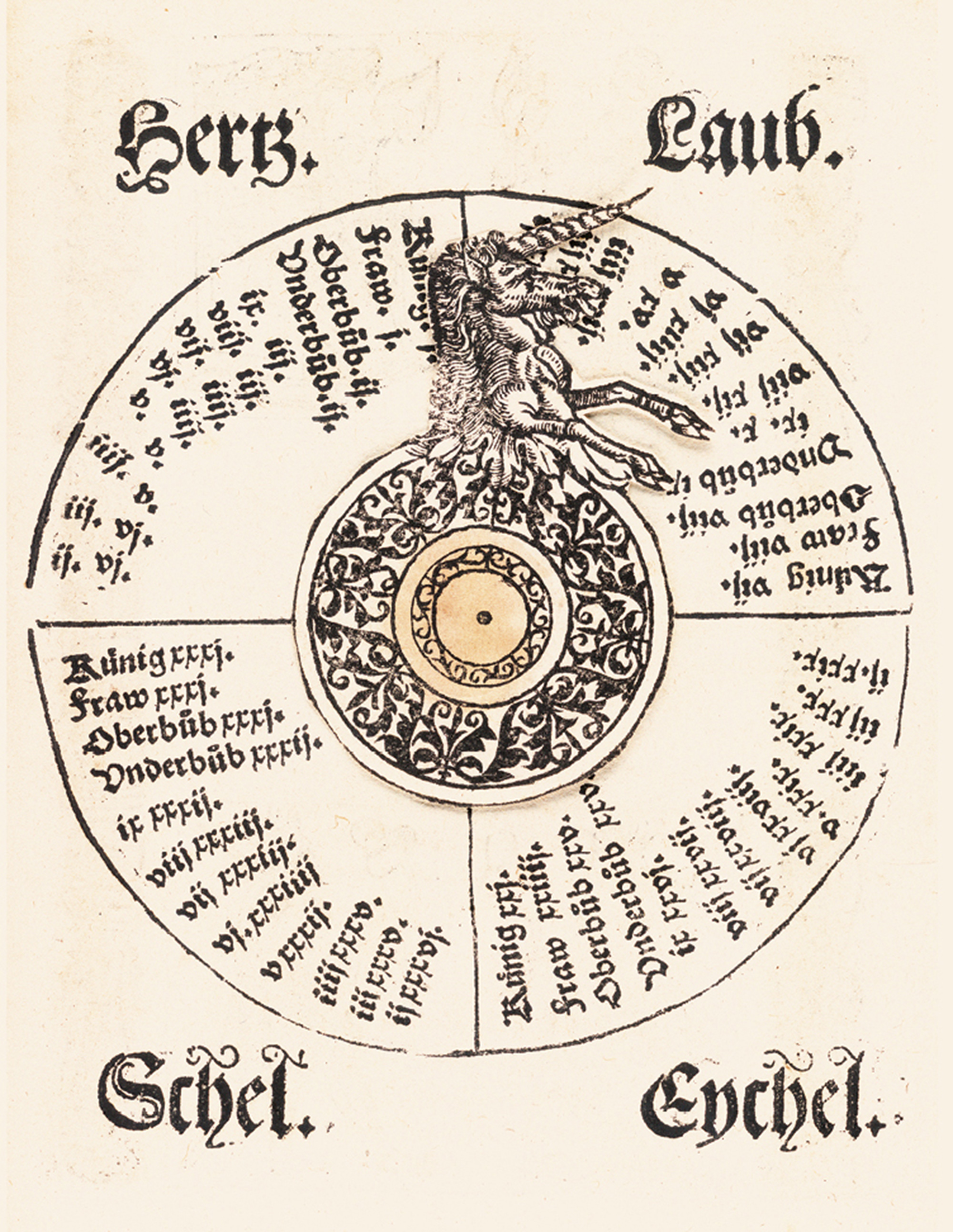Dialed In
The volvelle and early modern computation
Suzanne Karr Schmidt
The most fragile and ephemeral wheels—printed or hand-drawn movable dials called volvelles—once reinforced the early modern user’s knowledge, sparked their imagination, and even entertained them interactively. Twenty-first century audiences accustomed to myriad games and calculating tools available at the touch of a screen might find such devices primitive, but for the time, the volvelle’s applications were unlimited. These movable dials improved the user’s grasp of religious and secular time, astronomy, astrology, navigation, and cosmography, as well as offering diverting attempts at prophecy. Produced in an enormous variety of forms, volvelles were only one of many types of interactive prints with moving parts; other types included prints with flaps (courtesans with liftable skirts and anatomy manikins with removable skin were particularly popular in the Renaissance) and printed elements that the user could cut out and construct into devices such as astrolabes.[1] The most artistically significant printed volvelles appeared in the heyday of the movable print in fifteenth-and sixteenth-century Germany.
Volvelles (from the Latin volvere, to turn) were dials engineered out of paper that were often, but not always, circular in shape and which were usually sewn onto a sheet of paper. The dials then turned around this axis like a wheel on an axle, which allowed them to interact with additional visual information printed on the main sheet. They were usually woodcuts issued as uncut sheets and were meant to be constructed by the purchaser or a bookbinder, though many uncut sheets have survived. Built up of multiple moving layers, they could also include pointer or index components that interacted with the information or images on each successive concentric circle. Scholars might construct the simplest volvelles themselves by cutting out the dials and sewing them to the page with a single thread secured by a knot on the back. With more difficulty, two dials glued onto a core set within a hole in the page resulted in a double-sided index that could be turned from either side. These most often generated answers for fortune-telling, as their results were made more random by being selected blindly. At their most spatially complicated, volvelles mimicked the many navigational, horoscopic, and time-telling functions of the planispheric astrolabe, projecting the map of the sky onto two dimensions.

While volvelles appear in hand-drawn manuscripts from the thirteenth century, these were usually purely schematic.[2] In contrast, fifteenth- and sixteenth-century German printmakers decorated volvelles with a rich iconography of angels as well as playful mythological beasts including dragons and unicorns.[3] The entry for volvelle in the Oxford English Dictionary cites a 1501 quote that explicitly mentions the sewn-in dial’s angelic overseer: “A Costlew pagent wt a volvell by the which the xii signes moved aboute the Zodiak..and ouer that voluell Sat, in a stage or pynnacle, Raphaell the Arch angell.” While this description does not precisely match any surviving or documented artifact, it suggests a luxurious manuscript with a combination of astrological and horological calendars using dials that were popularly available. The main examples then known were the lunar dial from the Nuremberg-based scholar-printer Regiomontanus’s much-copied Calendar of 1474, with a rudimentary image of the moon at its center, and an anonymous German woodcut calendar valid from 1466 to 1494 with an angel pointer on the dial.[4] Both required substantial calculation on the part of the user to predict the highly irregular date of the most important Christian feast day, Easter. The printed angel, bounded by the sun and the moon, however also offered a semi-miraculous shortcut, as his Latin legend states, “I give with the foot the past and the finger the future Easter and the golden number.”[5] Indeed, a user would simply need to know the date of